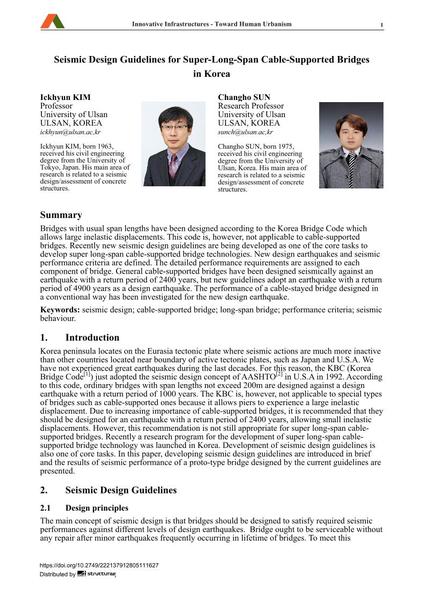Seismic Design Guidelines for Super-Long-Span Cable-Supported Bridges in Korea

|
|
|||||||||||
Bibliographic Details
| Author(s): |
Ickhyun Kim
Changho Sun |
||||
|---|---|---|---|---|---|
| Medium: | conference paper | ||||
| Language(s): | English | ||||
| Conference: | 18th IABSE Congress: Innovative Infrastructures – Towards Human Urbanism, Seoul, Korea, 19-21 September 2012 | ||||
| Published in: | IABSE Congress Seoul 2012 | ||||
|
|||||
| Page(s): | 1127-1133 | ||||
| Total no. of pages: | 7 | ||||
| DOI: | 10.2749/222137912805111627 | ||||
| Abstract: |
Bridges with usual span lengths have been designed according to the Korea Bridge Code which allows large inelastic displacements. This code is, however, not applicable to cable-supported bridges. Recently new seismic design guidelines are being developed as one of the core tasks to develop super long-span cable-supported bridge technologies. New design earthquakes and seismic performance criteria are defined. The detailed performance requirements are assigned to each component of bridge. General cable-supported bridges have been designed seismically against an earthquake with a return period of 2400 years, but new guidelines adopt an earthquake with a return period of 4900 years as a design earthquake. The performance of a cable-stayed bridge designed in a conventional way has been investigated for the new design earthquake. |
||||
| Keywords: |
seismic design seismic behaviour cable-supported bridge long-span bridge performance criteria
|
||||
